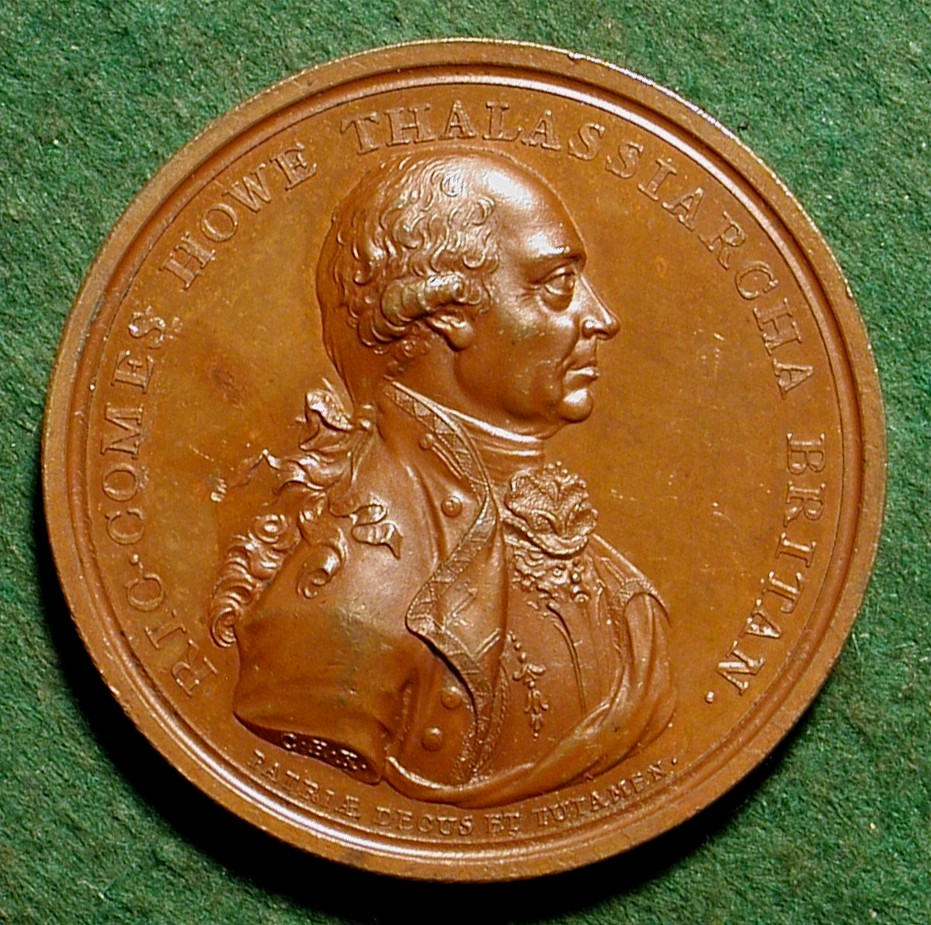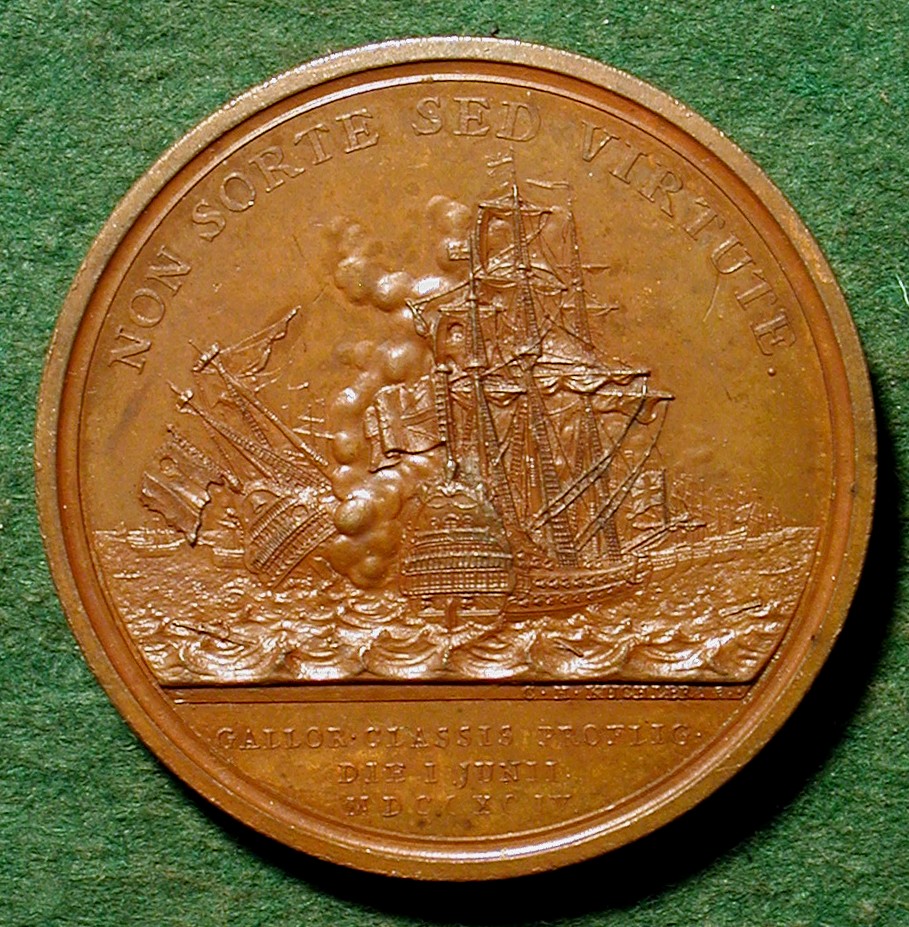

Historical and
Commemorative Medals
Collection of Benjamin Weiss
|
ADMIRAL EARL HOWE, Naval Victory of First of June KUCHLER, C.H.: England, 1794 , Bronze, 47 mm Richard, Earl Howe (1725-1799), had a distinguished career, rising to the level of Admiral. Early in his profession, Howe was notable for his service during the American War of Independence and the French Revolutionary Wars. At the beginning of the American War of Independence, Howe was sympathetic to the colonists, as he was familiar with Benjamin Franklin, who was a friend of his sister. Howe was relatively unsuccessful in the naval battles with the American colonists, partly because he was refused adequate naval forces. Later in his career, from 1783 until 1788, Howe served as First Lord of the Admiralty during the government of William Pitt (the Younger). In 1794 he was victorious in the engagement between English and French ships of the line, in a battle which became known as the "Glorious First of June" (also known as the Third Battle of Ushant), the event commemorated by this medal. This battle was the first and largest fleet action of the naval conflict between the Kingdom of Great Britain and the First French Republic during the French Revolutionary Wars.
|
|